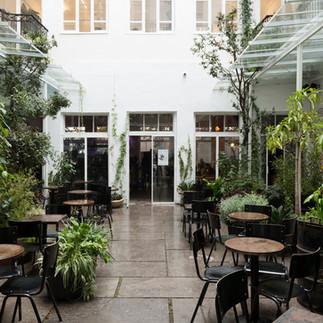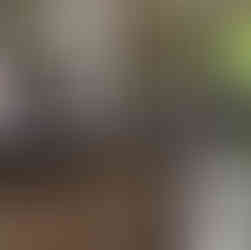Story: Achuzat Bait- Tel Aviv , Israel May 9th 2021
- Lili Naveh
- May 9, 2021
- 4 min read
The municipality of TLV offers to its "Golden Age" residents a free guided walking tours, of 2 hours each, in various neighborhoods in the city., which always reveal a new piece of the city's fascinating history,
The major Intersection between Rothschild Blv, and Hertzel St north of Jaffa, with the few surrounding blocks, is known to be the once founding upscale new neighborhood, of the then in 1909., budding young city not yet caned Tel Aviv, but named Achuzat Bayit
The modern one story private housing pioneering project, on the outskirts of the ancient port city of Jaffa was established originally as a "Garden City" estates, mimicking the European popular architectural concept, of the 1900,
This concept of urban planning, in which self-contained communities are surrounded by "greenbelts", containing proportionate areas of residences, industry, and agriculture. was initiated in 1898, in the UK aiming to capture the primary benefits of a countryside environment and a city environment while avoiding the disadvantages presented by both.
The goal of the Ahuzat Bayit society was to build a "Hebrew urban centre in a healthy environment, planned according to the rules of aesthetics and modern hygiene" meaning running water toilets and showers inside the houses, and initially had no commerce in the new emerging neighborhood,.
60 of most reputable families. led by Akiva Aryeh Weiss a known architect and city planer, organized and held a draw for the plots of sand land, in order to establish the new modern Hebrew city .
Rothschild Blv, which was originally a stretching shallow creek, accidentally turned into a Boulevard when the wheelbarrows full of the dug out sand, from preparing the plot's ground infrastructure, were dumped into and creek and completely filled.

The small guided tour met by the famous Nahum Gutman's Mosaic fountain , depicting 4000 years of Tel Aviv's history (Fountain) and which is located at the beginning end of Rothschild Blv. intersecting with Herzel st

A homage was paid to Akiva Aryeh Weiss's home on the corner of Hertzel #2 and Echad
Ham Streets, known for the its street level. round corner

The structure from 1909 originally, was built as a one story house, and when Herzel St, transformed into a more commercial one, a second residential floor, was added, while the space at the street level, contained through the years a jeans' store, and later a Fish restaurant, and it went under several preservation projects.

Across from. the Weiss family's round corner house, the square corner home of the Pollak family was built ( Pollack house in Hebrew)

Apparently this straight line corner house was a contentious item of debate between these 2 legendary neighbors. The Pollack house, which also had changed few hands and functions, served between 1921 -1936 as a (Zion) library space of the nearby Hertzelia Hebrew Gymnasium

The famous HaGymnasia HaIvrit Herzliya,- Herzelia Hebrew Gymnasium
was the country's historic first Hebrew high school, founded in 1905 in Ottoman-controlled Jaffa, on Herzl Street in the Ahuzat Bayit neighborhood,
The architecturally beautiful structure, designed by Joseph Barsky, inspired by descriptions of Solomon's Temple, was a major Tel Aviv landmark until 1962.
Regretfully, without a conservation sense toward the historic sites of the modern changing city, the deteriorating building, was razed for the construction of the Shalom Meir Tower, the tallest commercial building in Israel of those days

A reconstructed proto-type Kyosk version, of which several, were built in the budding city of the 1920th, to serve the famous cold Gazoz (Soda) Spritzer drink, still stands at the Rothschild/Herzel intersection.

Further down south on Herzel St. #14 once a residential building, the reconstructed
structure is now housing a branch of HaPoalim Bank

The conserved building was the home of the Danon family, and its first street's floor, which is beautifully preserved, and now showcases ATM machines, once housed
the iconic Shore Cafe establishment owned by the Shore brothers, who advertised and took pride in their best Gazoz (Soda) and ice- cream.

PENSAKS PASSAGE – ( פסג׳ פנסק)
A building - further down on 16 Herzel st. another beautiful impressive 3 stories conserved structure from 1925, bears eclectic east and west features,
It was originally, the first integrated Commercial Mall , of the new city, which also had the first Parisian style elevator installed in it

The name of the Passage is engraved on the building in Hebrew and English.
And the sign directing to the Elevator, can still be found on the wall at the entrance.

Where once was the entry to the spacious elevator, behind an iron gate, at the building's street entrance level, a hidden restaurant named "Herzel 16" is nested, within an outdoor enchanting garden.
Before getting back onto Rothschild Ave, a visit to what was once Tel Aviv’s first luxury Hotel Palatin, . is also a must

In the 1920s the German born architect Alexander Baerwald, one of the most important architects of that time, was invited to plan a luxury hotel in the emerging new city and built in 1926 on the corner of 28 Ahad Ha’am St. and Nahalat Binyamin St.
Baerwald is best known for designing the campus of the Technion University and Reali-gymnasium in Haifa, and became Professor of architecture at the Technion for his life,

The elegant Pink structure was also the tallest 4-story building in the city and featured wooden floors, a concert hall, ballroom and one of the first elevators in Tel Aviv, but closed just over a decade on in 1938 following conflict during the Great Arab Revolt
The building has since been used as offices,
The old Palatine hotel was recently acquired and preserved in 2020 by the Fattal hotel chain. The new Palatin Hotel was designed by architects Yoav Messer and Eyal Ziv.
Containing 85 rooms, the hotel will incorporate a grand lobby, gourmet restaurant, pool, spa, gym and a business lounge.
Back on Rothschild Blv, where all the low stories conserved buildings - a work in progress, are now surrounded by commercial tall sky scarpers and residential towers,
and where our tour ended, we stared at the skeleton of the the gutted off all walls structure known as the "Independence Declaration Hall", which has been under restoration and conservation, for some time.

Originally the Dizengoff House, - Tel Aviv’s first Mayor- which was built in 1910 and was one of the first houses to be built in the Ahuzat Bayit neighborhood. It is the site of the signing of Israel's Declaration of Independence. From 1932 to 1971 it housed the Tel Aviv Museum of Art.
Once fully restored the historic building will continue serving as a museum dedicated to the signing the declaration and the history of Tel Aviv.

More on buildings restoration and old Tel-Aviv Stories









Comments